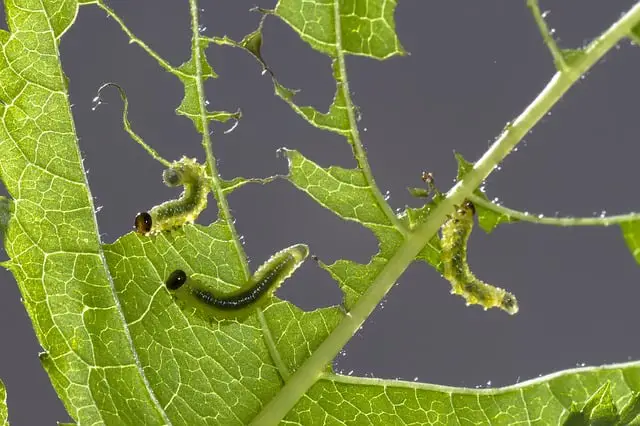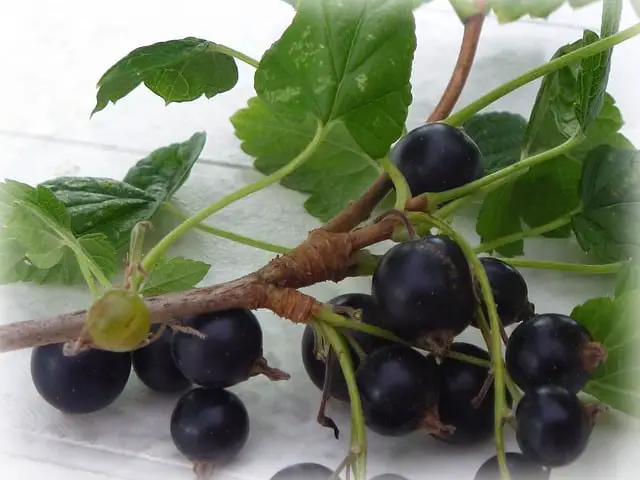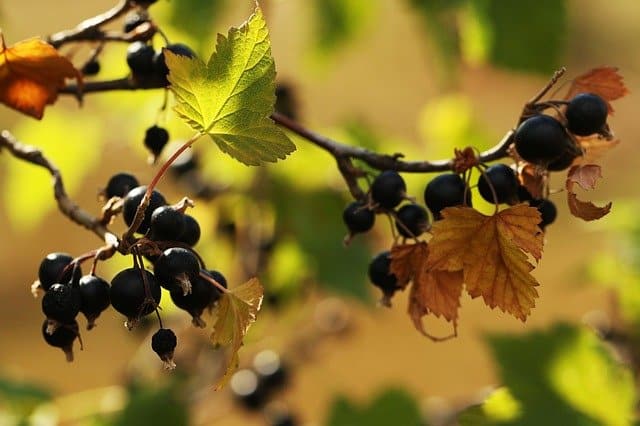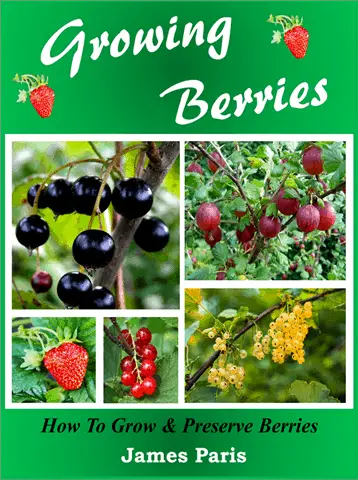Growing fruit berries is perhaps one of the most satisfying food growing jobs around the garden. Maybe it’s because of the fact that fruit is associated with sweets and puddings, jam and preserves – sweet things that most of us like to eat and bring thoughts of happiness perhaps!
In this short introduction to growing blackcurrants I have borrowed from our book on the subject that also covers growing other fruit berries such as blueberries, whitecurrants, redcurrants, strawberries and gooseberries.
All the information you need to grow and care for these tasty fruit berries can be found in this Amazon book.
Meanwhile enjoy this preview and a look insider the cover at the most popular of all fruit berries – the Blackcurrant.
Introduction to the Blackcurrant
The perennial Blackcurrant (Ribes nigrum) is without doubt the most popular of the currant fruit plants. Its deep purple/black berries are rich in vitamin C and anti-oxidants, and its rich dye from the fruits make excellent food coloring on a domestic and commercial basis.
With the blackcurrant widely used for jams, jellies, pies, fruit drinks and a host of other food-related products; it is guaranteed to remain top of the list for kitchen garden fruit producers.
The plant itself, which is a medium sized shrub, is easy to grow in zones 3-8 in with a well-manured soil/compost of around pH 6. A healthy plant will produce around 10-12 lbs of berries.
Planting Blackcurrants:
Blackcurrants can grow in a wide variety of soils, but prefer well drained, wet (not water-logged) loamy compost. Plenty of well-rotted manure and organic material will provide the plant with the nitrogen, phosphorous and potassium it needs to produce a bumper crop of berries.
Planting is usually done with two year old shrubs – although 1 year cuttings will still bear fruit – bare root or potted, as fruits will be harvested from these plants in the growing season. Plant 4-5 feet apart in rows divided by 6-8 feet. Follow directions as per the redcurrants.
Unlike red or Whitecurrants which fruit on old wood; blackcurrants fruit on new wood. This means that for established plants the previous year’s wood should be cut to about 1/3 its length, with any old or diseased growth cut out entirely..
New plants should be pruned by cutting all shoots back to two buds above ground level. This allows the root system to get more established and produces a healthier crop in the long term.
Established plants should have the main shoots cut back by about 1/3 each year, to prevent overcrowding which will increase the chances of fungal diseases. Shoots growing out sideways should be cut back or supported to prevent fruit from lying on the ground as the shoot becomes fruit-bearing.
Cuttings taken from established plants in November can be cut to about ten inches long and heeled in over winter. These cuttings can then be planted in march to form a new bush.
Caring for Blackcurrants:
Plants are cared for in pretty much the same way as the redcurrant bushes, with especial attention given to keeping wild birds at bay.
Blackberries are prone to the sawfly and aphid attack in the same way as other berry plants – treatment therefore is the same as mentioned earlier.

‘Big Bud’ is a particular pest (blackcurrant big bud mite) that attacks the blackberry bush, resulting in enlarged buds infested by mites. These buds should be picked off and burned. Try the garlic spray or a spray made from the rind of lemon boiled in water. The bush should be inspected after fruiting, and if the problem has persisted then it is best to replace the whole bush. Burn – do not compost – the infected bush.
American gooseberry mildew can be a problem especially in a poorly ventilated area or during heavy humid weather. Try and improve ventilation if possible, and spray with the garlic water.
Keep the area around the base of the plant well mulched for moistness and nutrition.
Blackcurrant companions

Good companions for redcurrants include garlic or chives to deter predator insects; legumes such as peas or beans will add nutrients to the soil, while strawberries will grow well in the mulch around the base and keep the area moist.
Planting marigold, honeysuckle or cornflowers nearby will encourage hoverfly whose larva feed on aphids.
Harvesting/Preserving Blackcurrants:
Since blackcurrants have to be pruned severely at the end of the growing season anyway, many people harvest by simply cutting away complete branches and taking them indoors to remove the berries. However you do it the end result is the same and the berries have to be picked from the bunches when eating fresh.
For freezing, they can be left in small bunches and placed into freezer bags – after washing and carefully air-drying the bunch to get rid of any excess water.
Jams & juices are especially popular for the blackcurrant, and recipes can be found in following chapters.
Blackcurrants can also be made into a rather excellent wine!
See the complete book on growing fruit berries on Amazon here…



